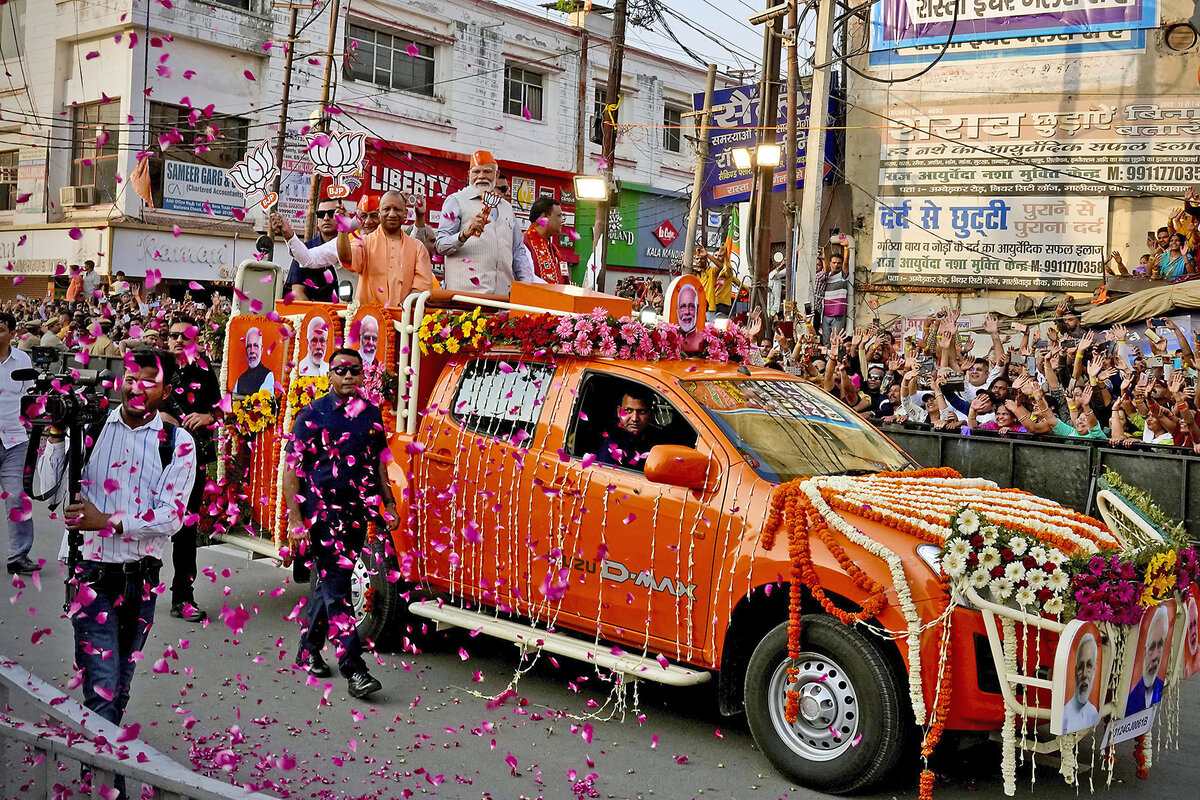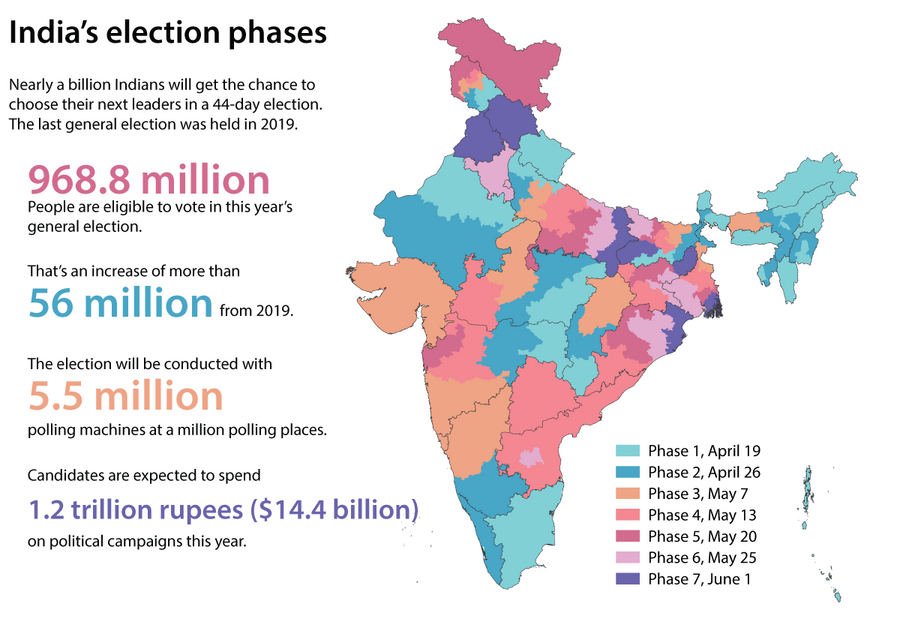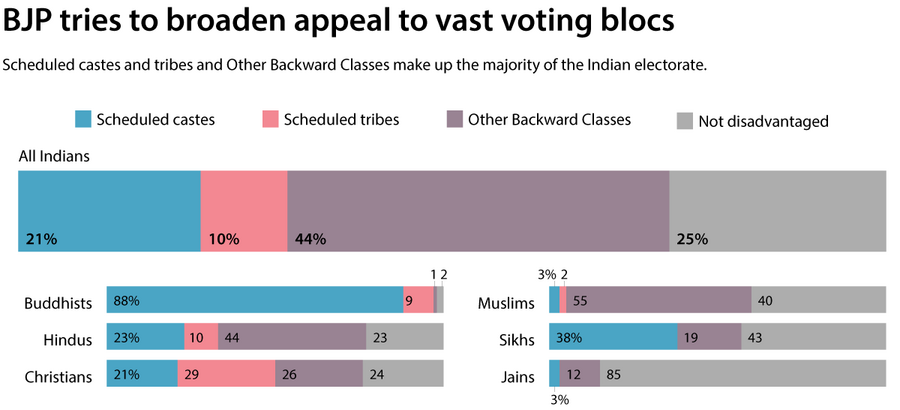Large, long, and expensive: What to know about India’s big election
Loading...
| Srinagar, India
Nearly a billion people are eligible to vote in India’s general election, which begins Friday and lasts for more than a month. It will be the largest democratic election in human history.
Facing off are the ruling Bharatiya Janata Party (BJP), led by incumbent Prime Minister Narendra Modi, and the Indian National Developmental Inclusive Alliance (I.N.D.I.A.), a coalition of over two dozen opposition parties. In 2019, the BJP won 303 of the 543 total parliament seats, while the main opposition party, the Indian National Congress, was reduced to only 52 seats.
In 2024, the BJP is aiming to win 370 seats – something political analysts say it’s well-positioned to do, given the party’s popularity and large war chest.
Why We Wrote This
Indians head to the polls this week for one of the world’s largest, longest, and most expensive elections. Here’s what you need to know before it starts.
Still, I.N.D.I.A. members are challenging the BJP over rising unemployment, policies targeting religious minorities, and India’s democratic backslide. Indeed, in recent years, India has witnessed a crackdown on media freedom and civil liberties, and experts say upcoming polls will serve as a litmus test for its democratic values and the nation's commitment to upholding the principles enshrined in its constitution.
With 968.8 million registered voters – including 26.3 million first-time voters – this election, if all goes smoothly, will be a major logistical feat.
The seven-phase election spans 44 days, commencing on April 19 with voting in 102 parliamentary constituencies. Results are expected on June 4.
More than 15 million officials will be called on to oversee the operation of over 5 million electronic voting machines in over a million different polling stations. Stringent security measures, including the deployment of the government forces, have been taken up to ensure a peaceful election.
According to experts, these elections are also poised to become the most expensive globally, with money spent by political parties and candidates expected to exceed the $14.4 billion spent on the U.S. presidential and congressional races in 2020. Already $2 billion has been funneled through India’s electoral bonds system, a now-defunct program introduced by the BJP government in 2017, enabling anonymous donors – including corporations – to fund political parties.
The Indian Supreme Court decided to abolish electoral bonds in February over concerns of fostering corruption, and data revealed shortly after confirmed that the BJP was the primary beneficiary.
The Election Commission of India reports that the BJP received 82.5 billion rupees (nearly $1 billion) from a total of $2 billion worth of bonds sold . In contrast, the main opposition Congress party received only 19.5 billion rupees ($2.38 million) during the same period.
Opposition leader Rahul Gandhi has criticized the BJP, asserting that it “made electoral bonds a medium for taking bribes and commission.” Despite the system’s abolition, concerns persist regarding the influx of unaccounted cash donations.
In India, caste and religious affiliations have historically influenced voting patterns.
The BJP's Hindu nationalist and pro-business platform, for example, has traditionally made it popular among upper-caste Hindus. But under Mr. Modi's leadership, the BJP has worked to broaden its electoral appeal, leveraging welfare programs to target lower-caste voters. Mr. Modi himself comes from an OBC (Other Backward Classes) background – an official umbrella term for castes the government defines as educationally or socially backward – which has helped his party make significant inroads into a key voting bloc.
India’s census data doesn’t show caste demographics, but according to estimates, more than 40% of the population identify as belonging to OBC.
The opposition is actively courting lower-caste voters as well, including advocating for a nationwide survey on the distribution and demographics of different caste groups. The caste census is a hot-button issue which critics deem discriminatory, but proponents argue would help address current-day caste disparities. At a recent public rally, Mr. Gandhi announced that if the Congress party is voted to power, it will immediately conduct a caste census throughout India.







